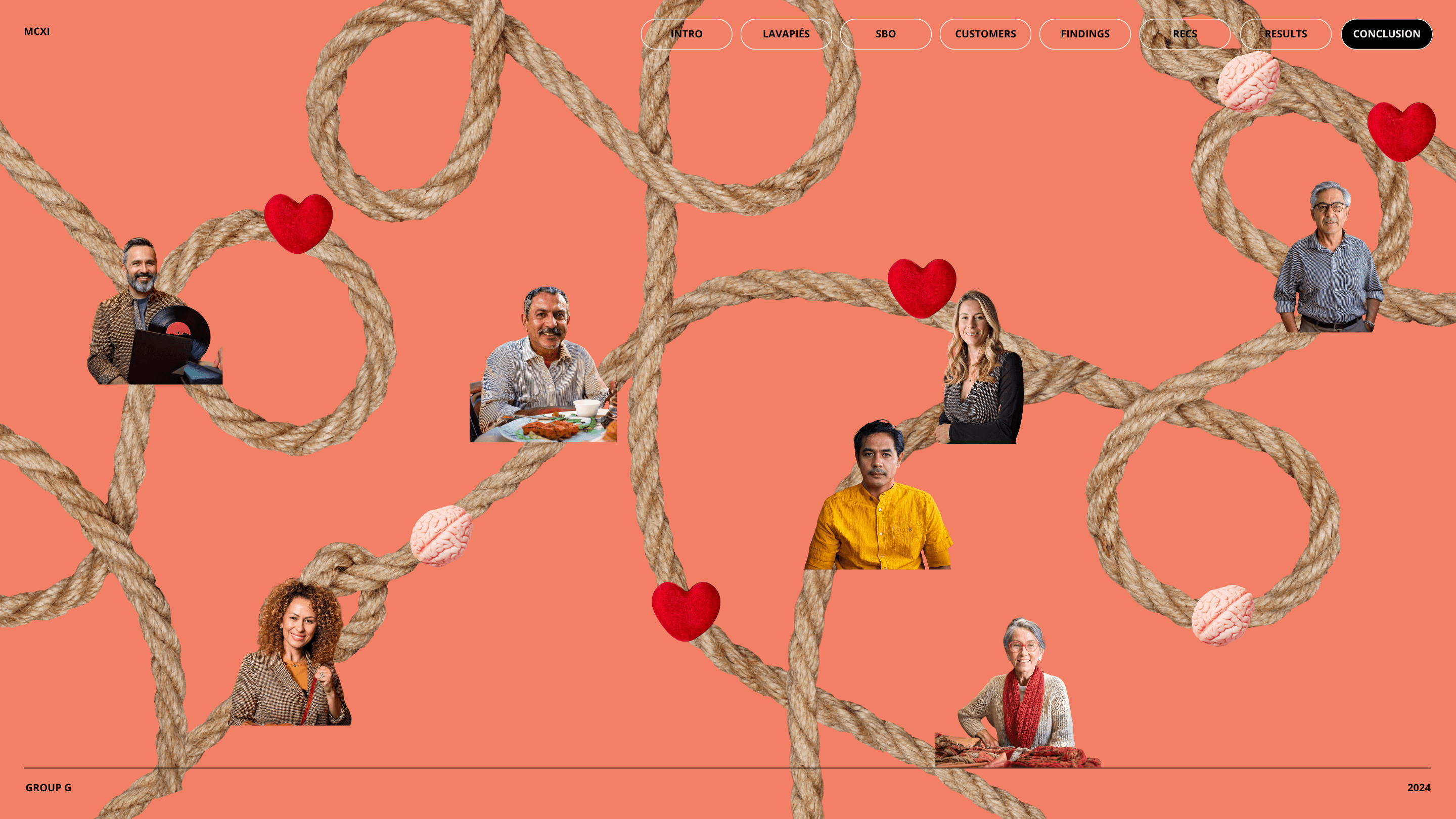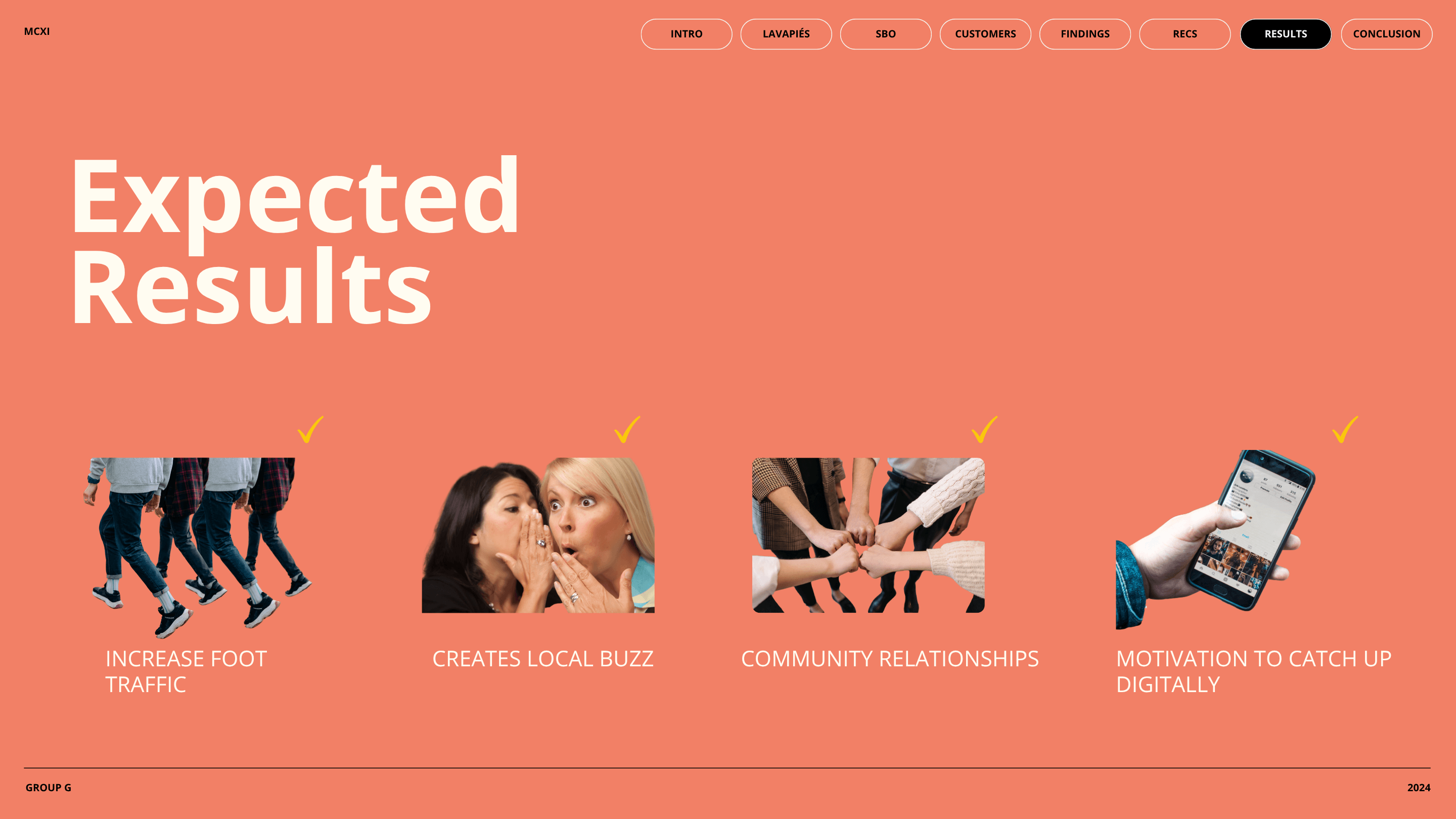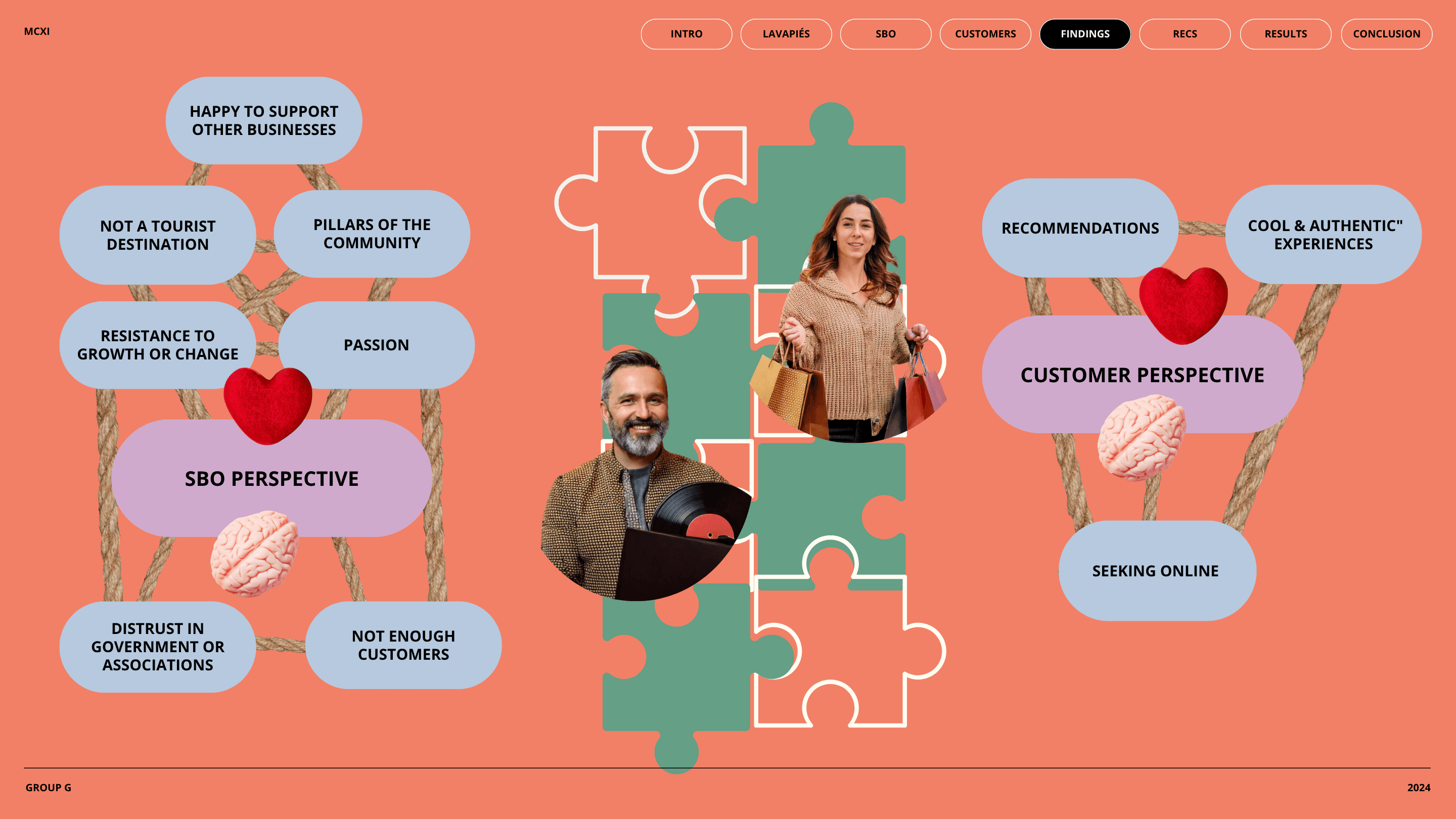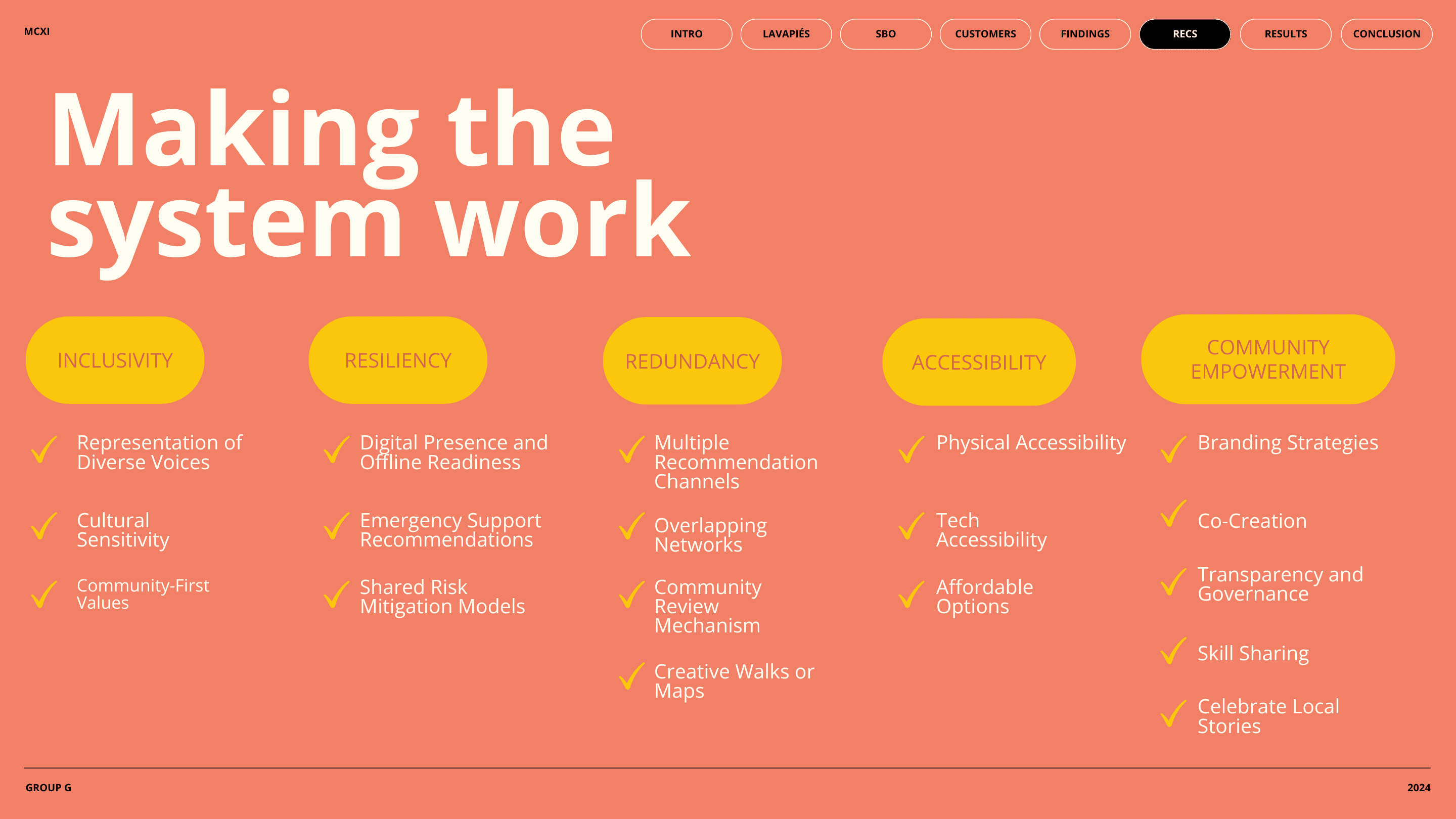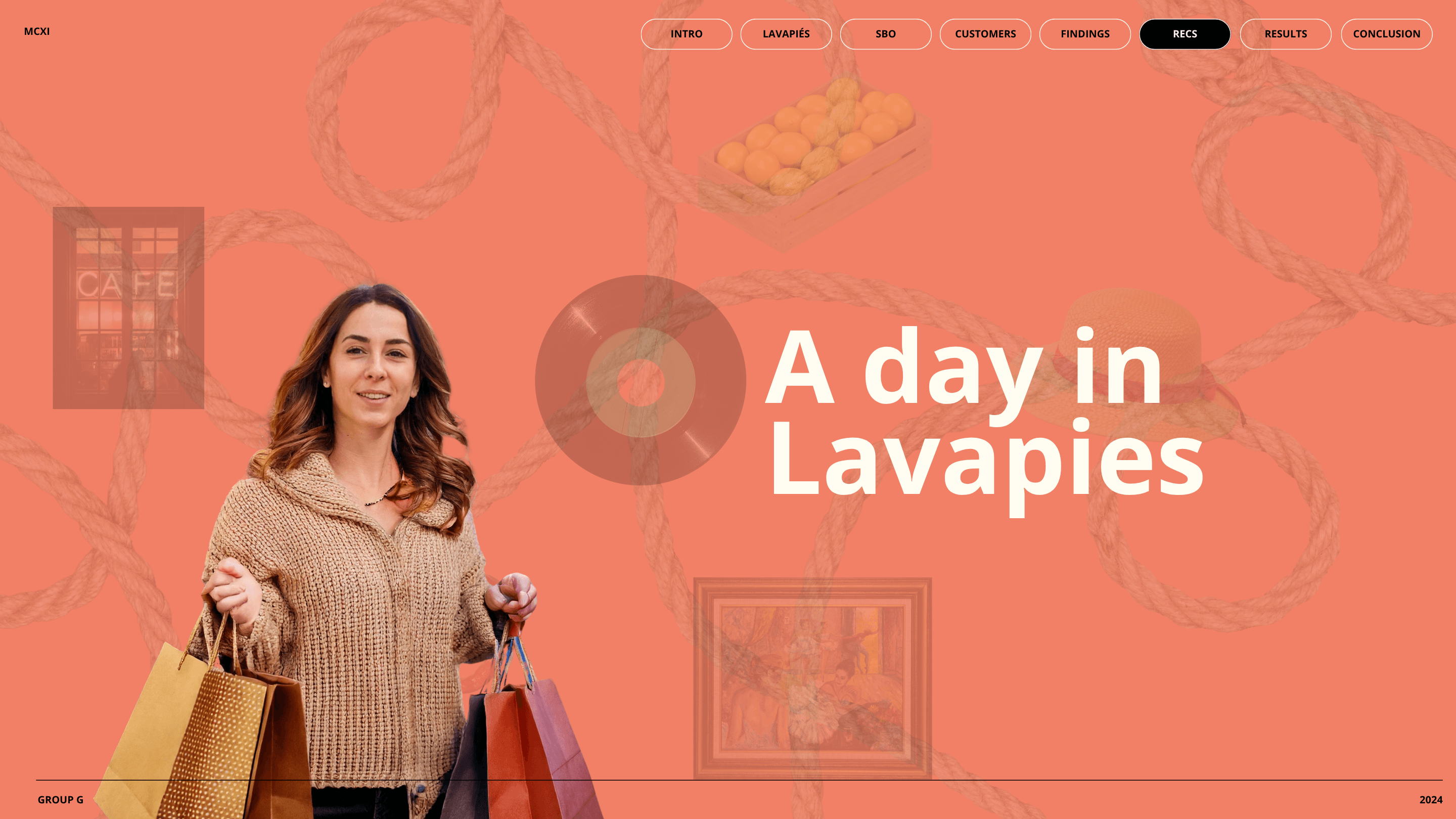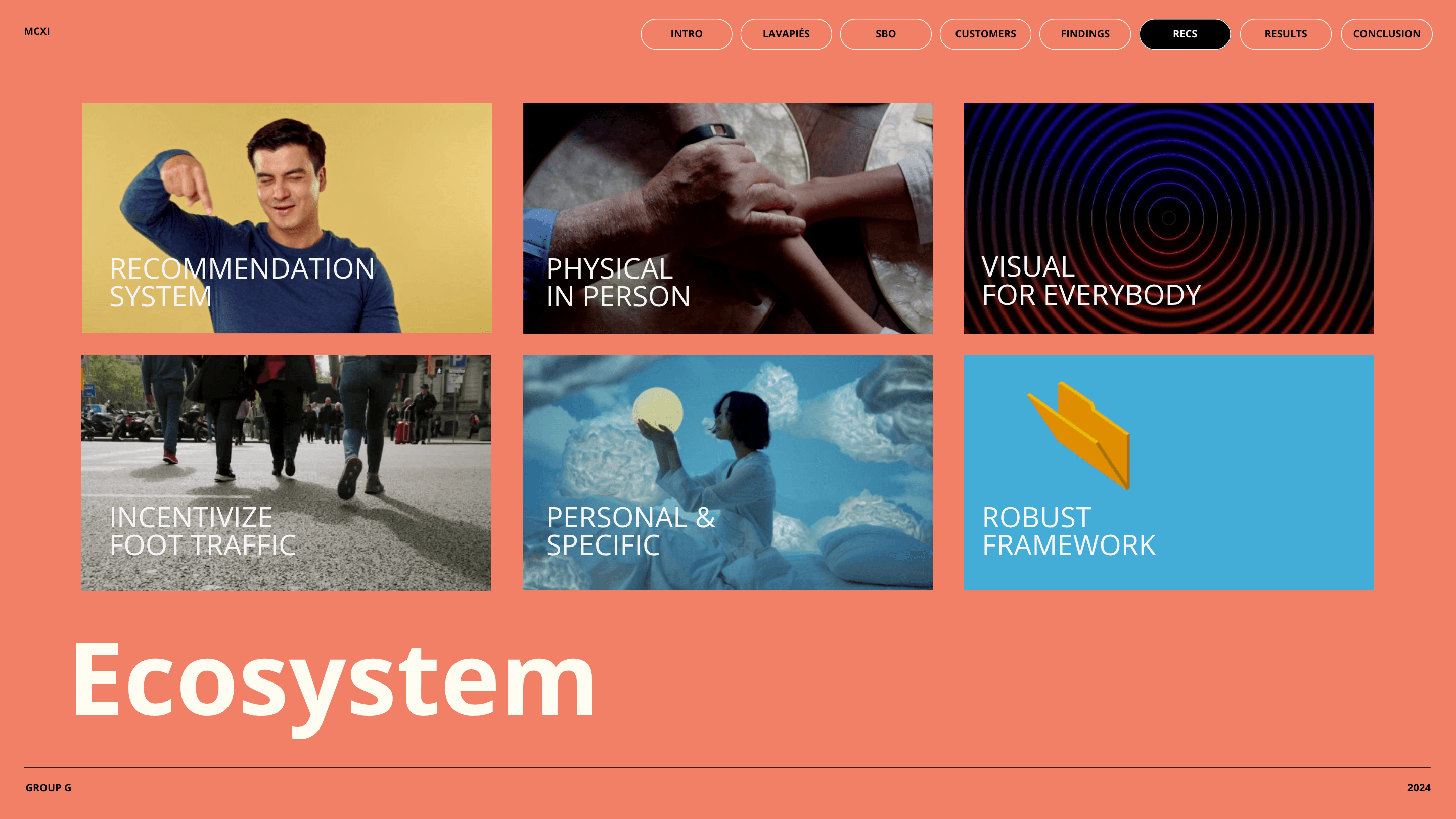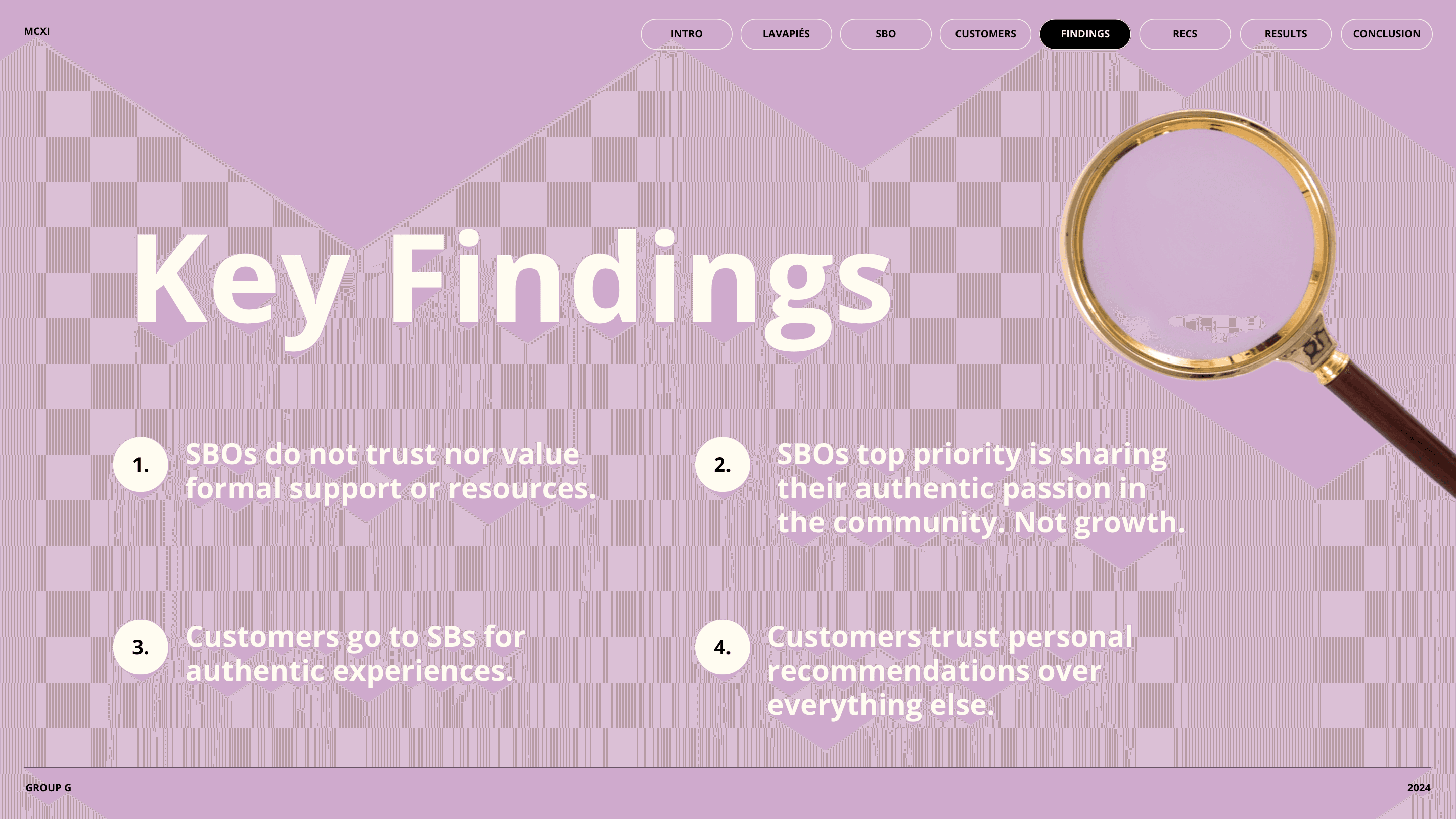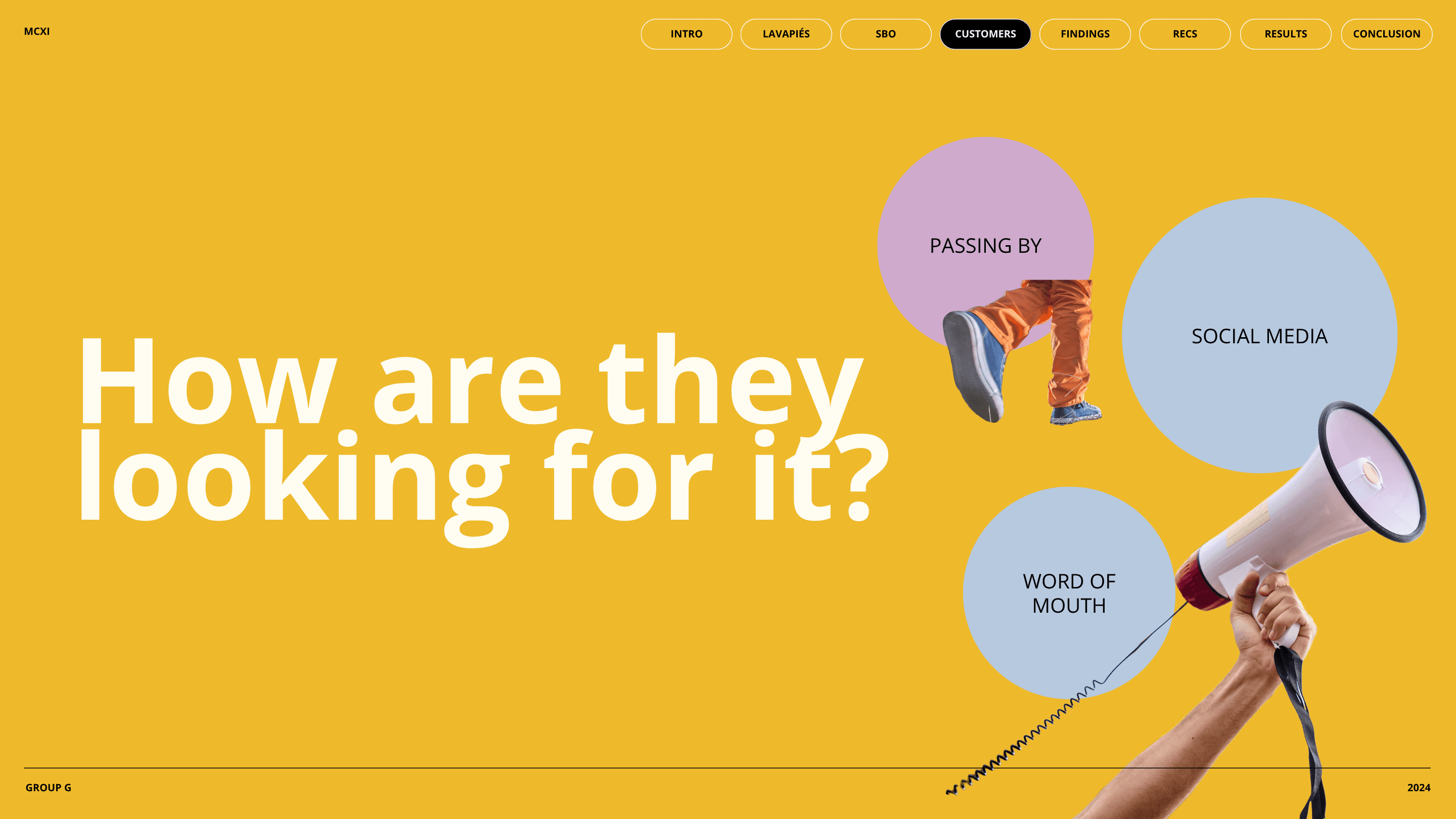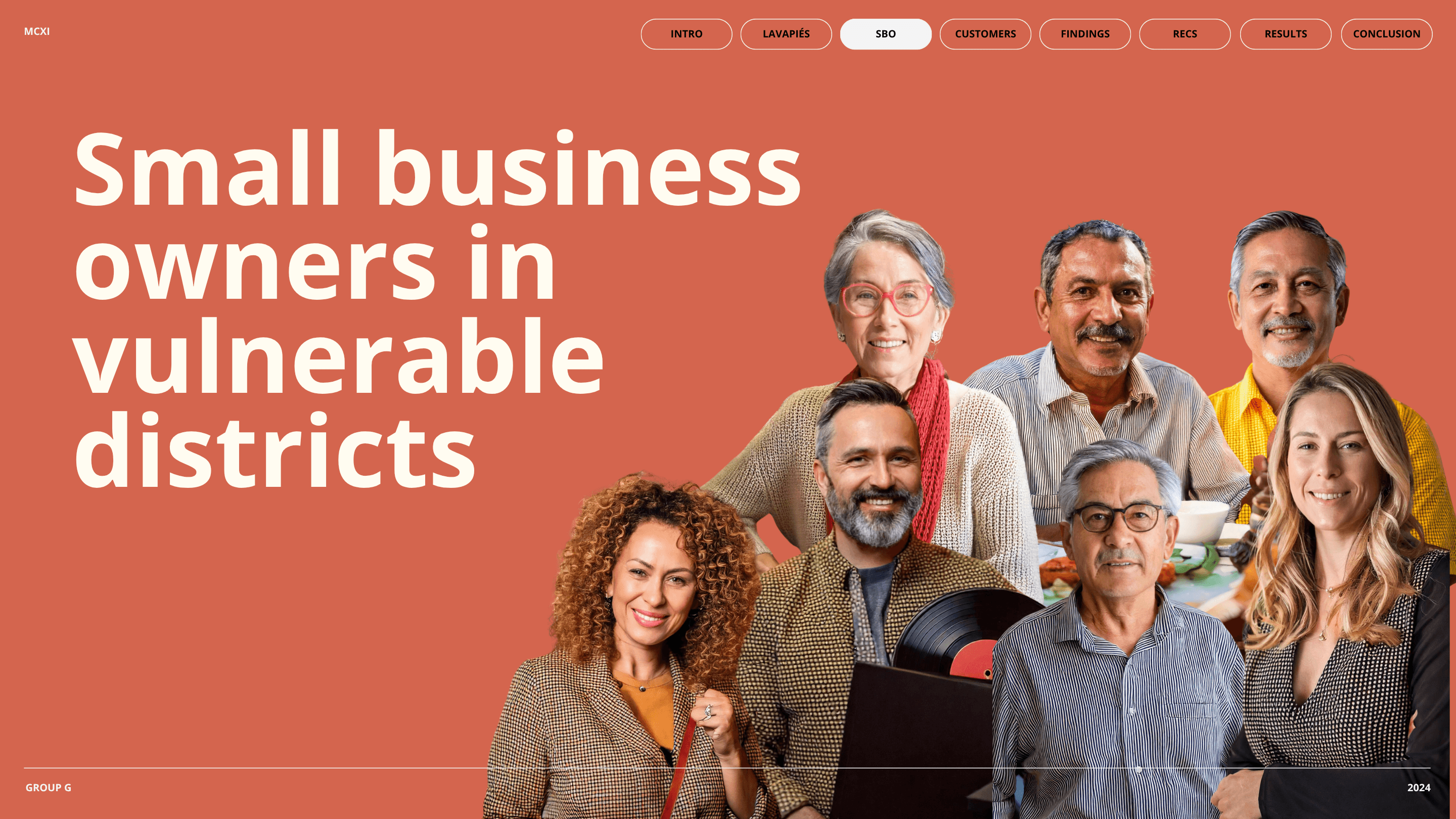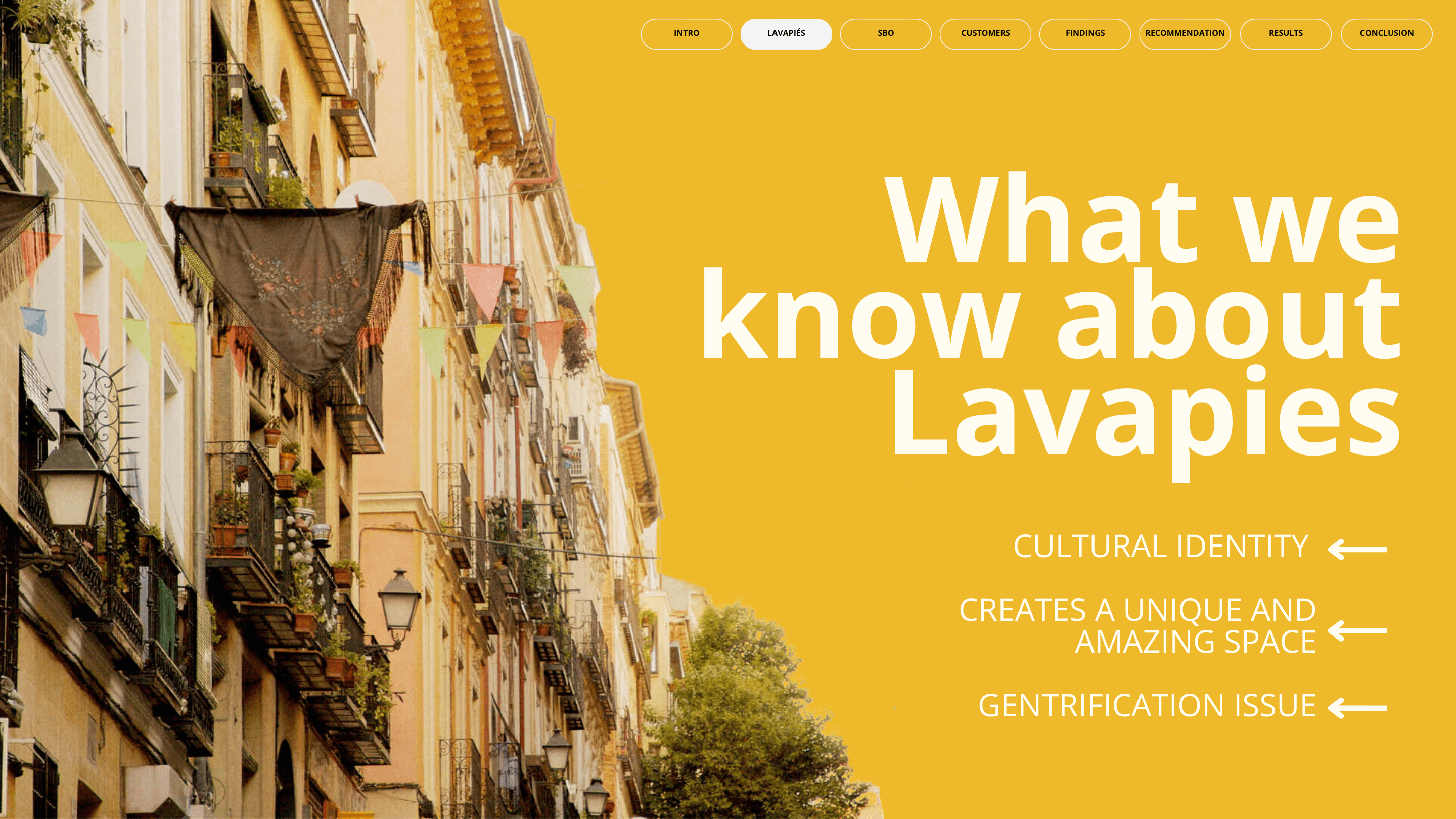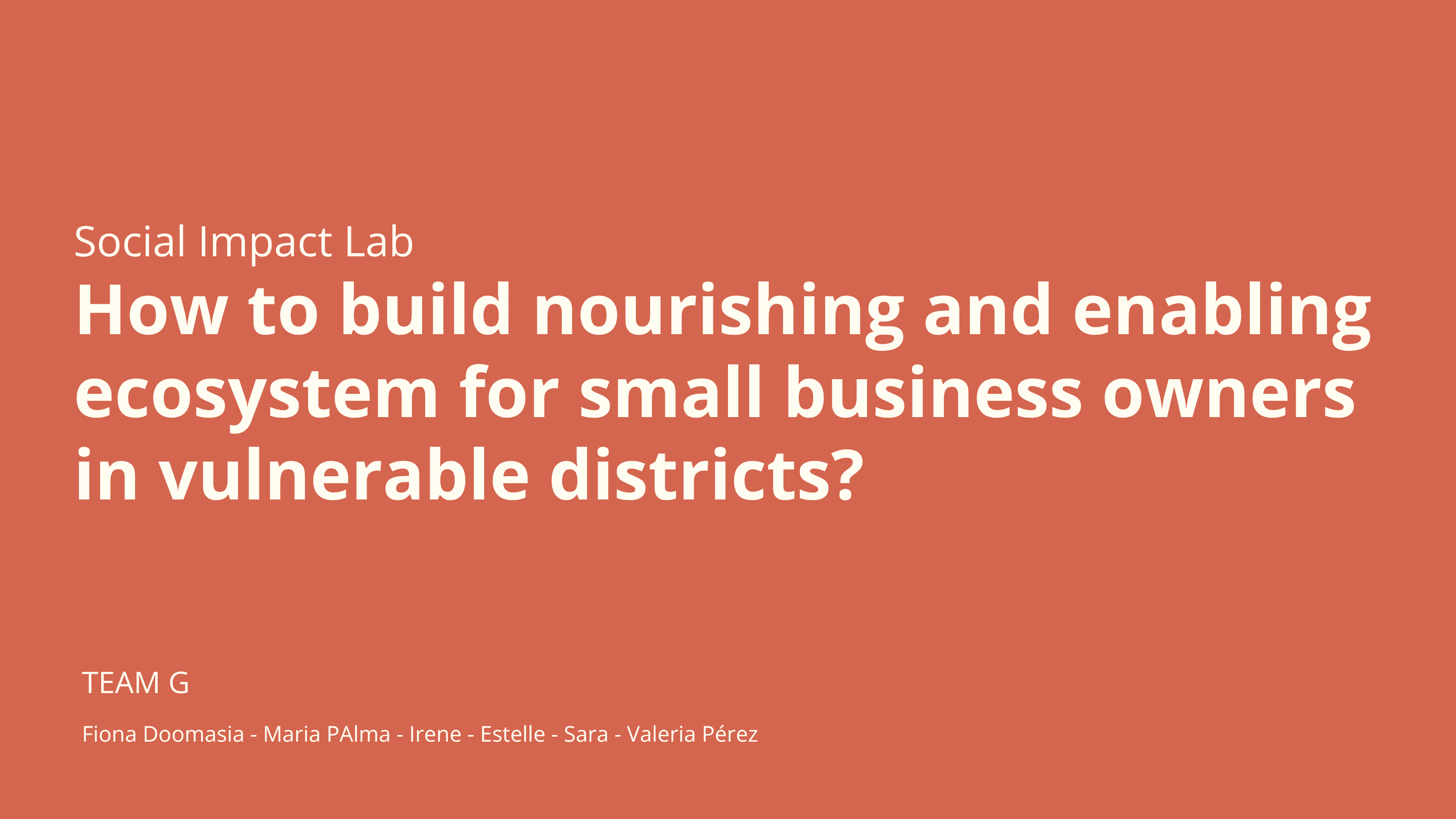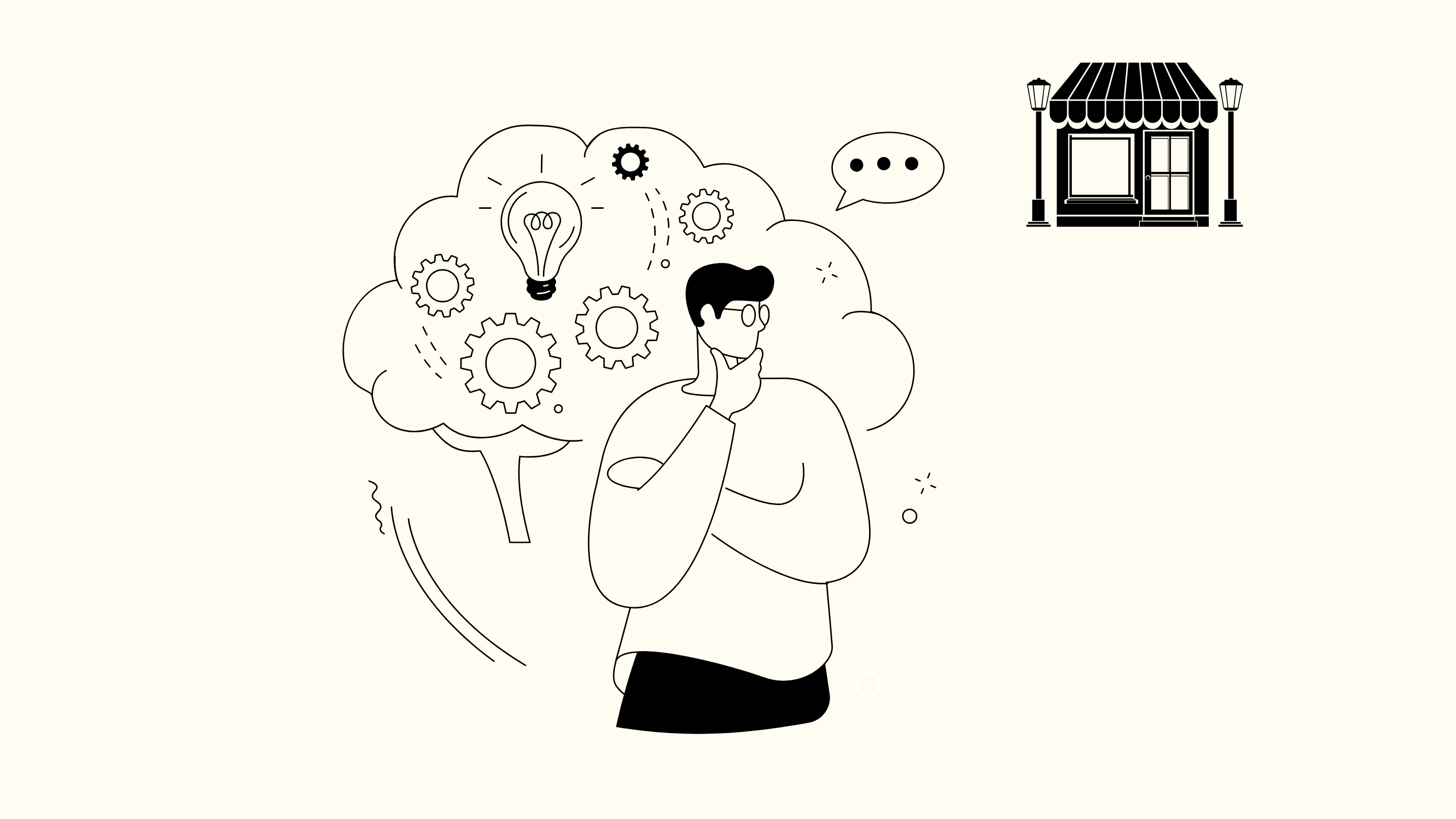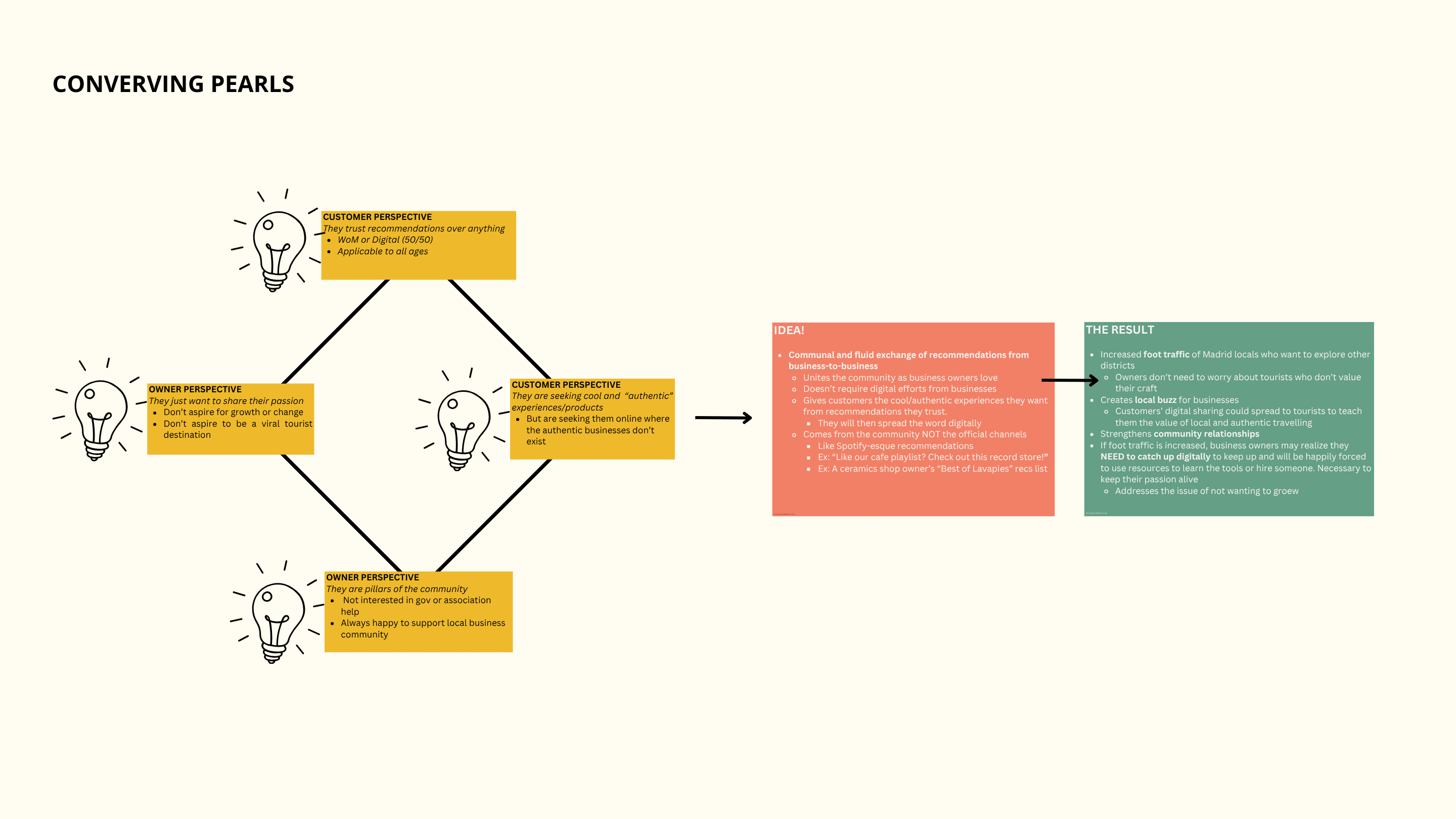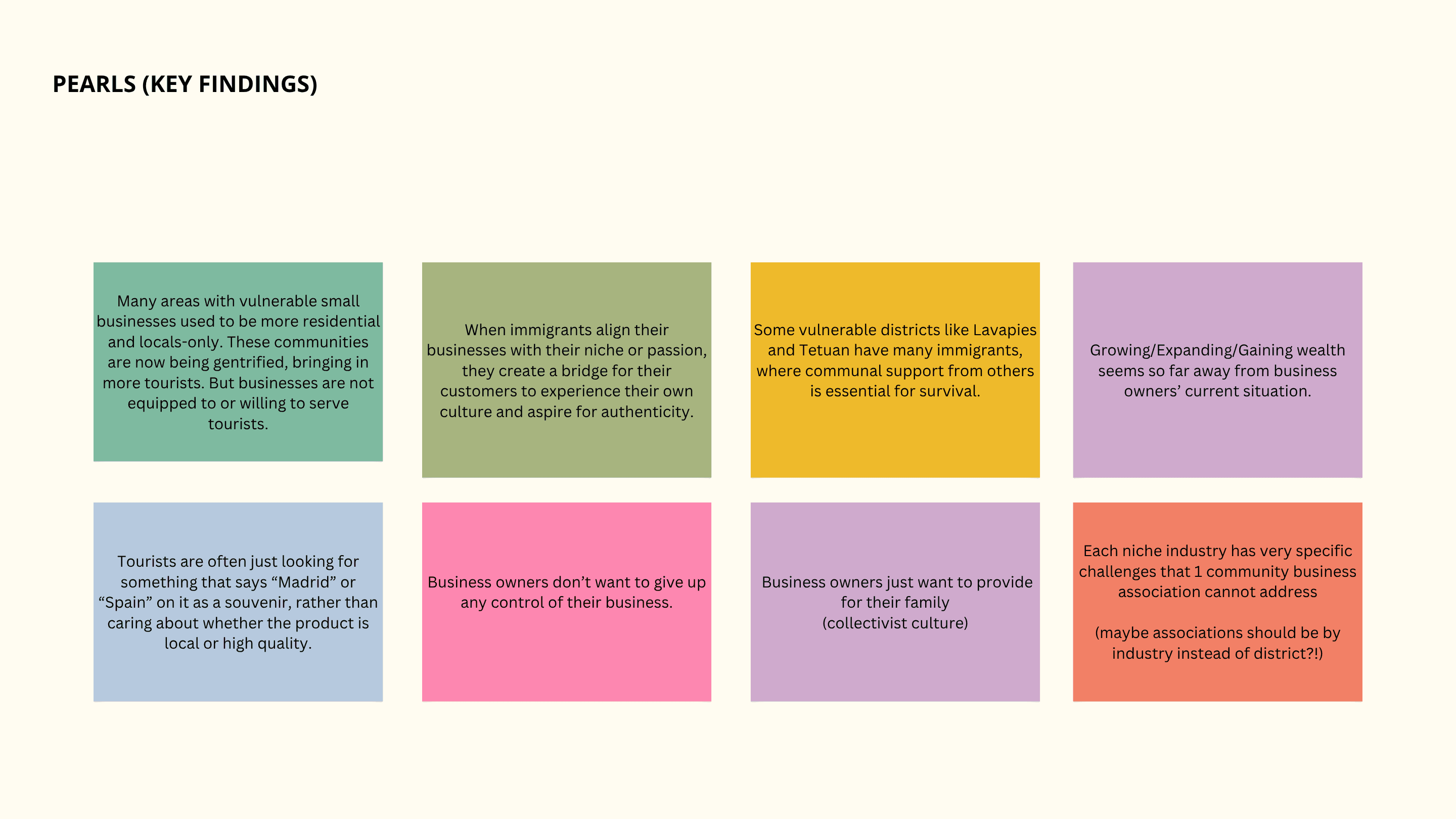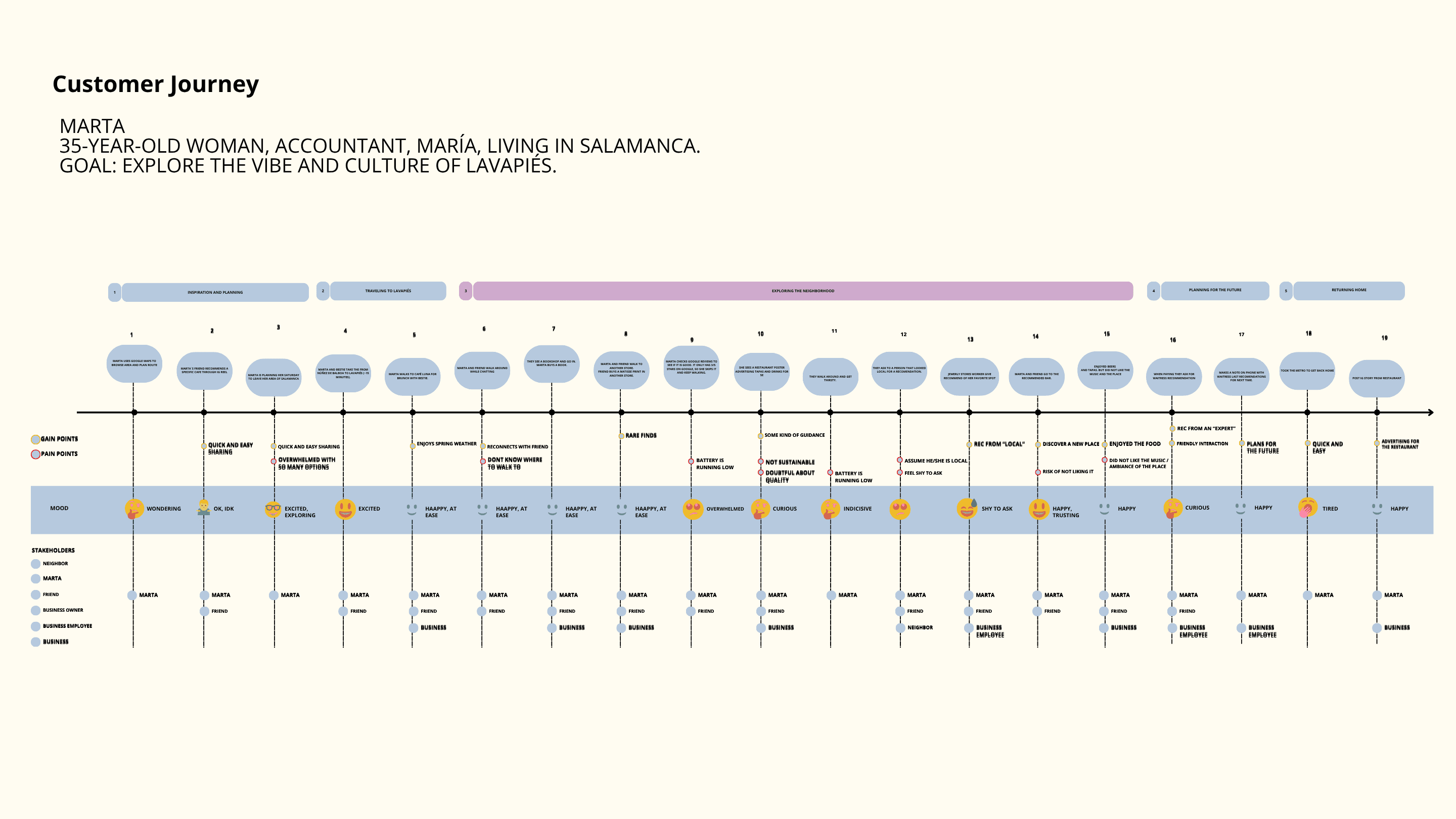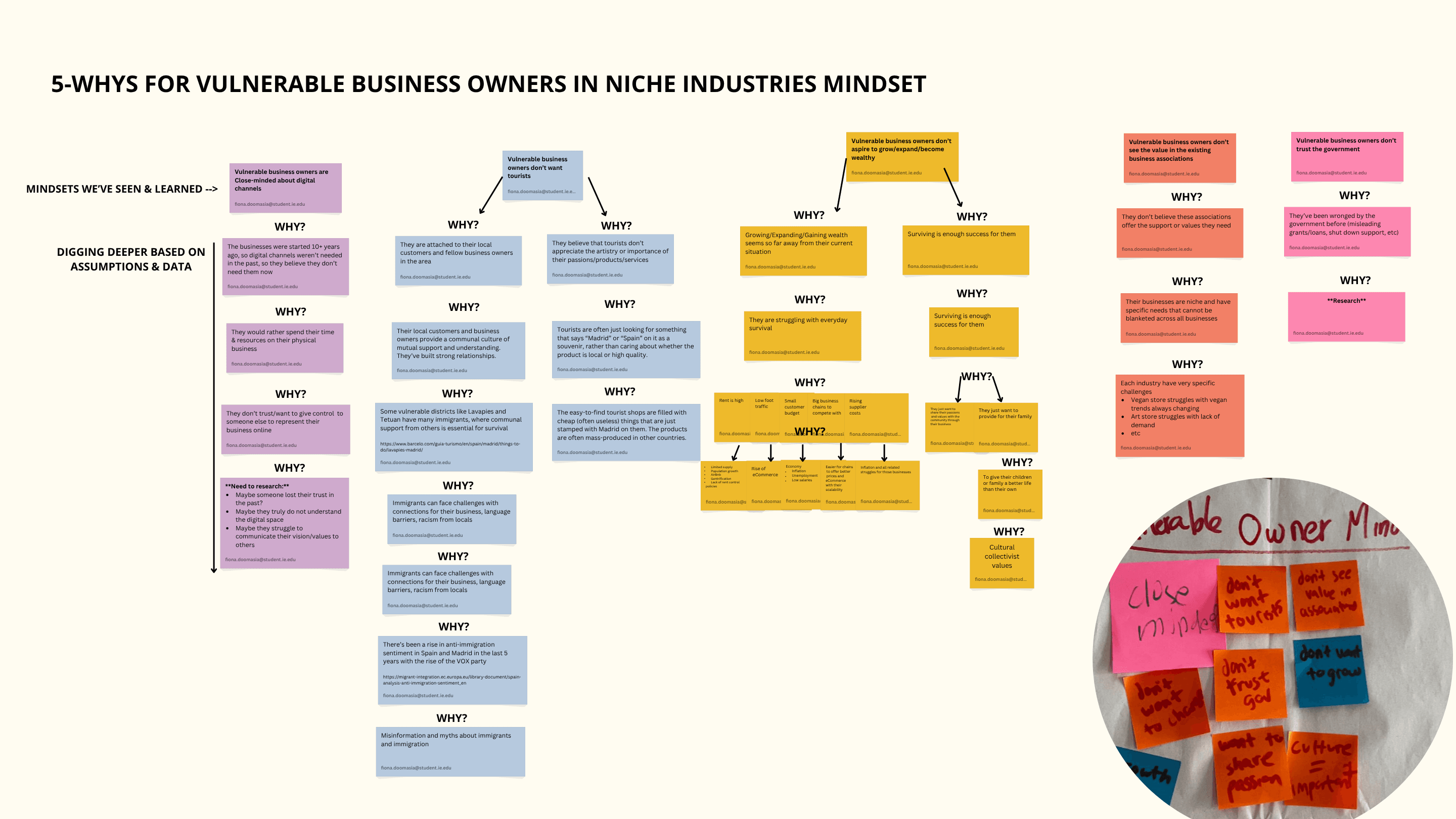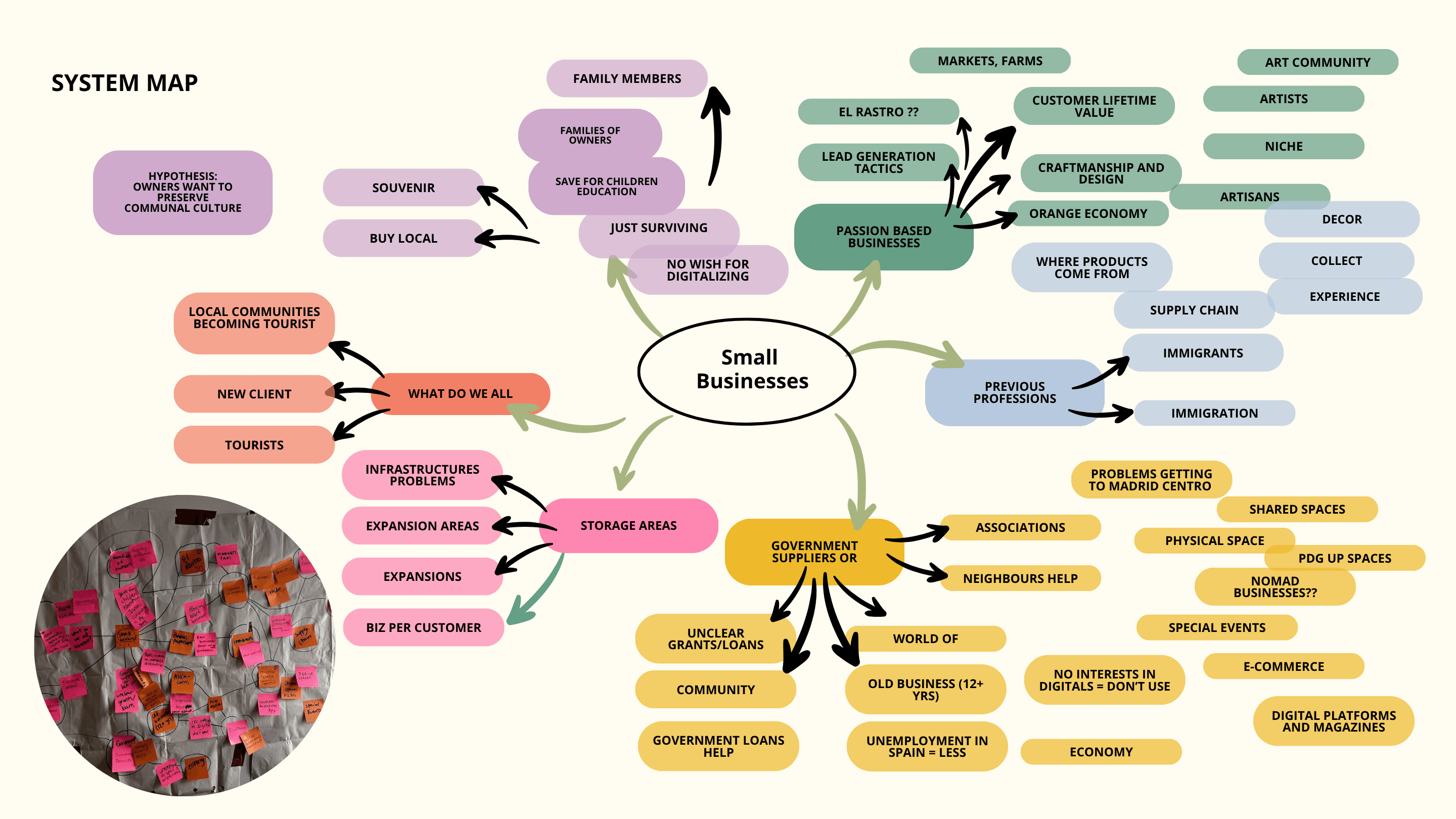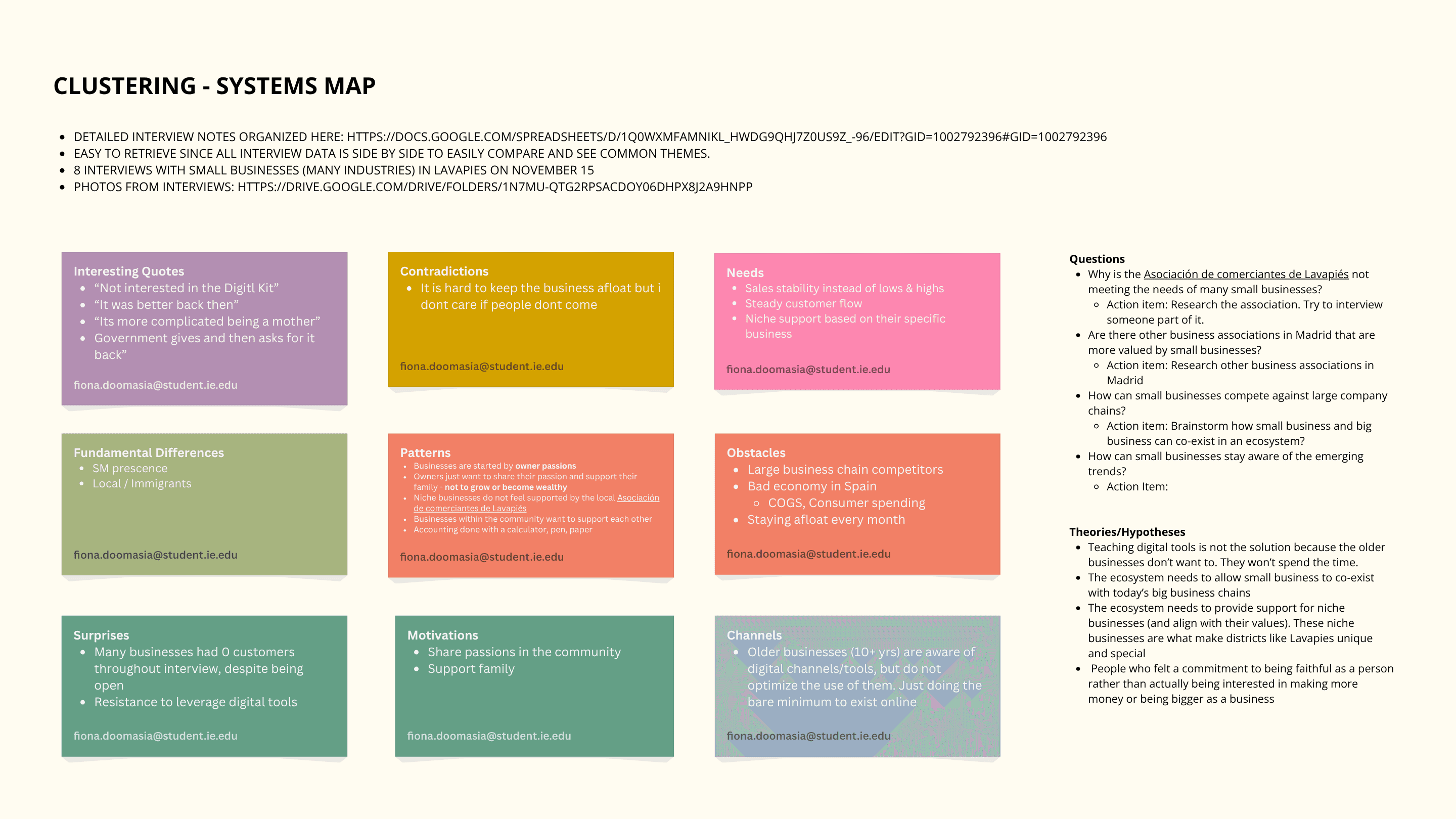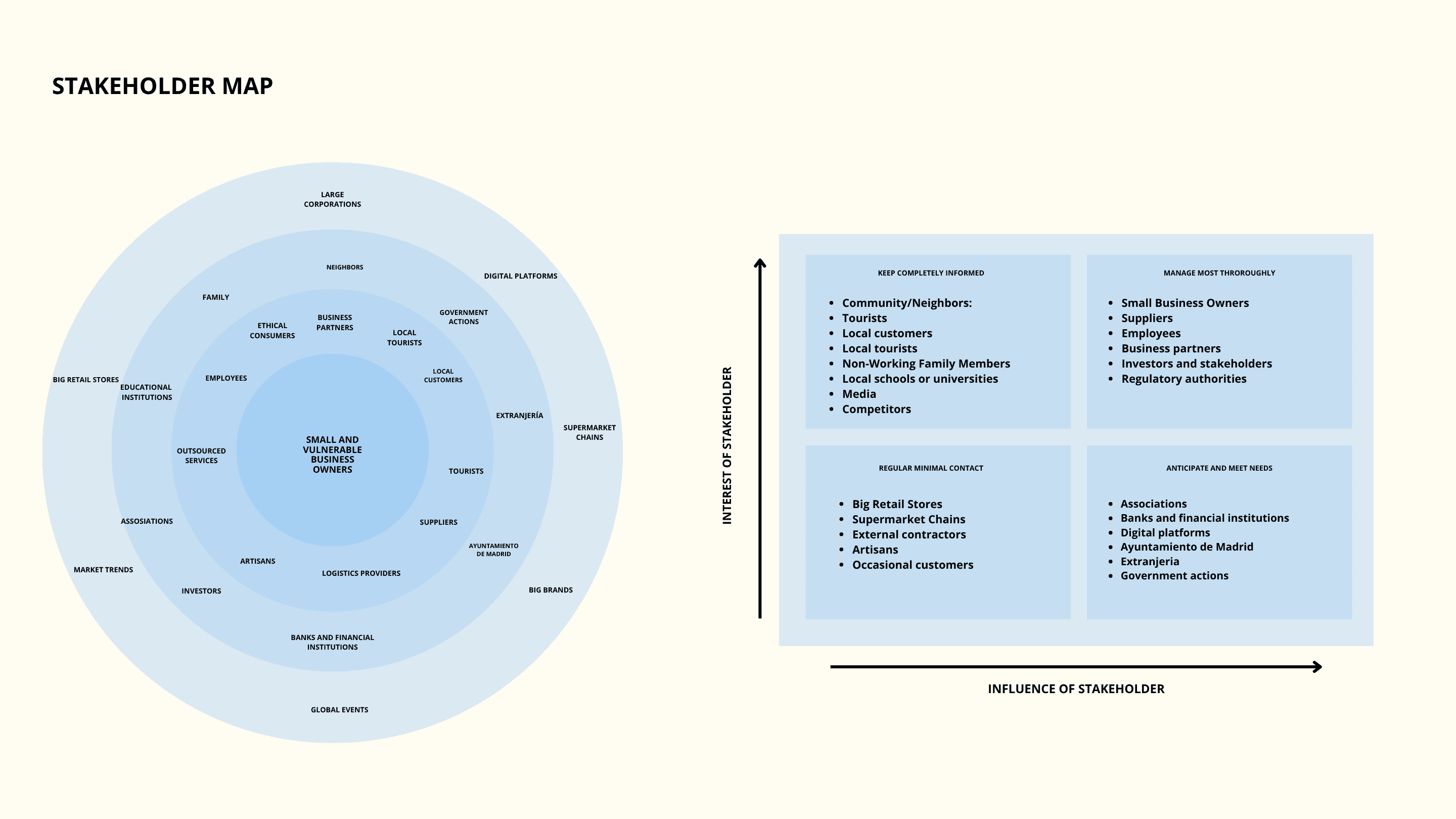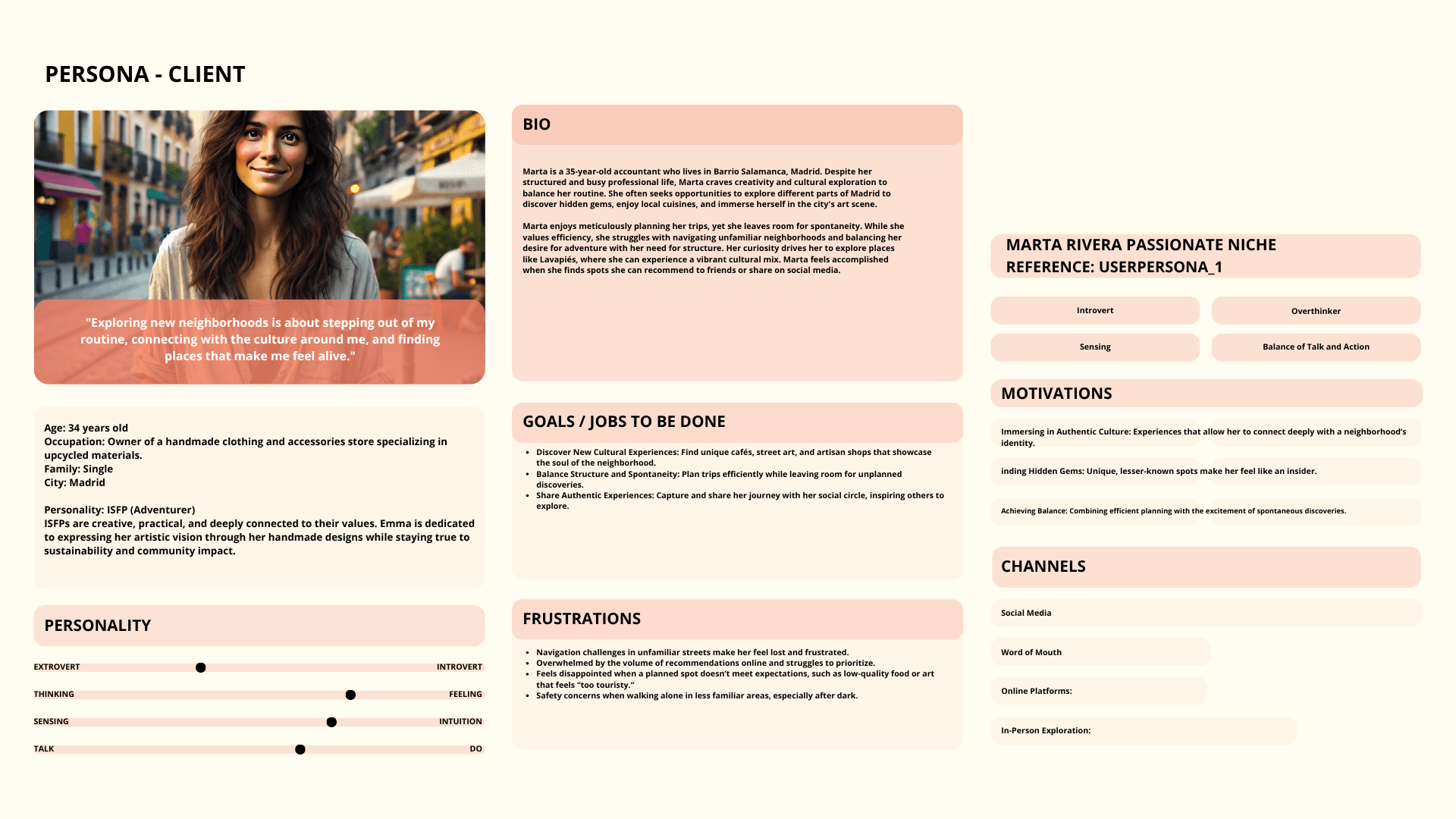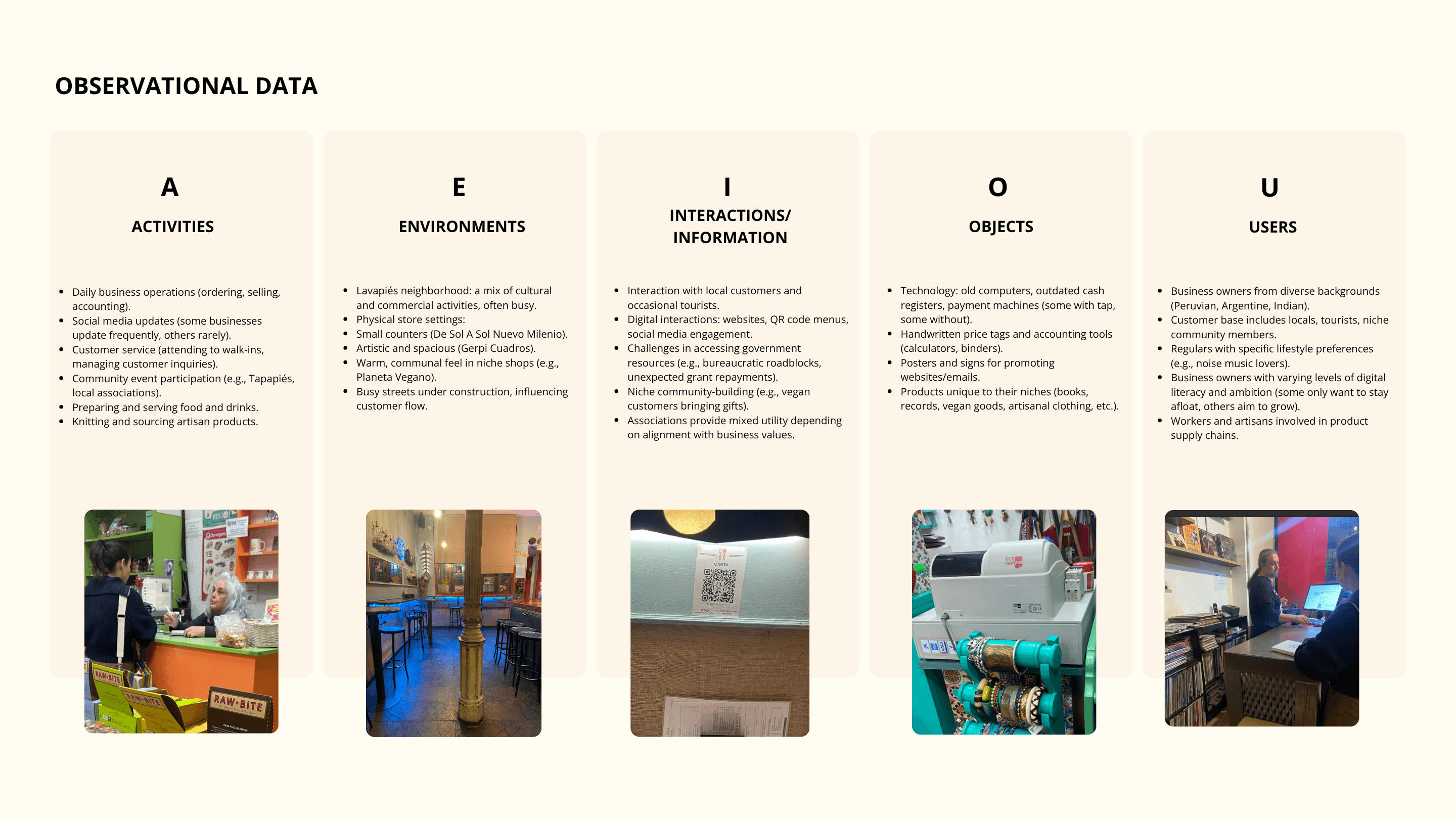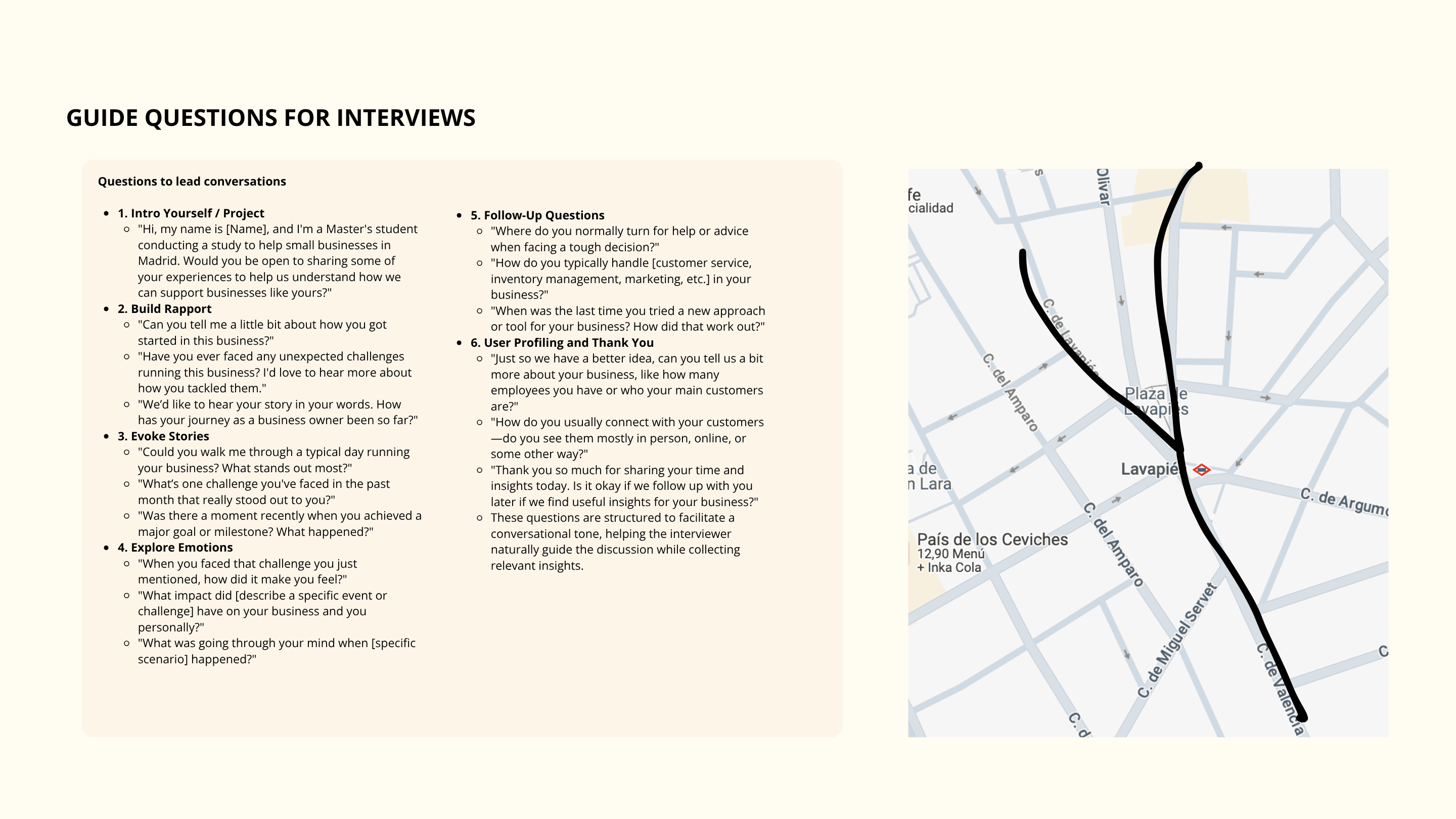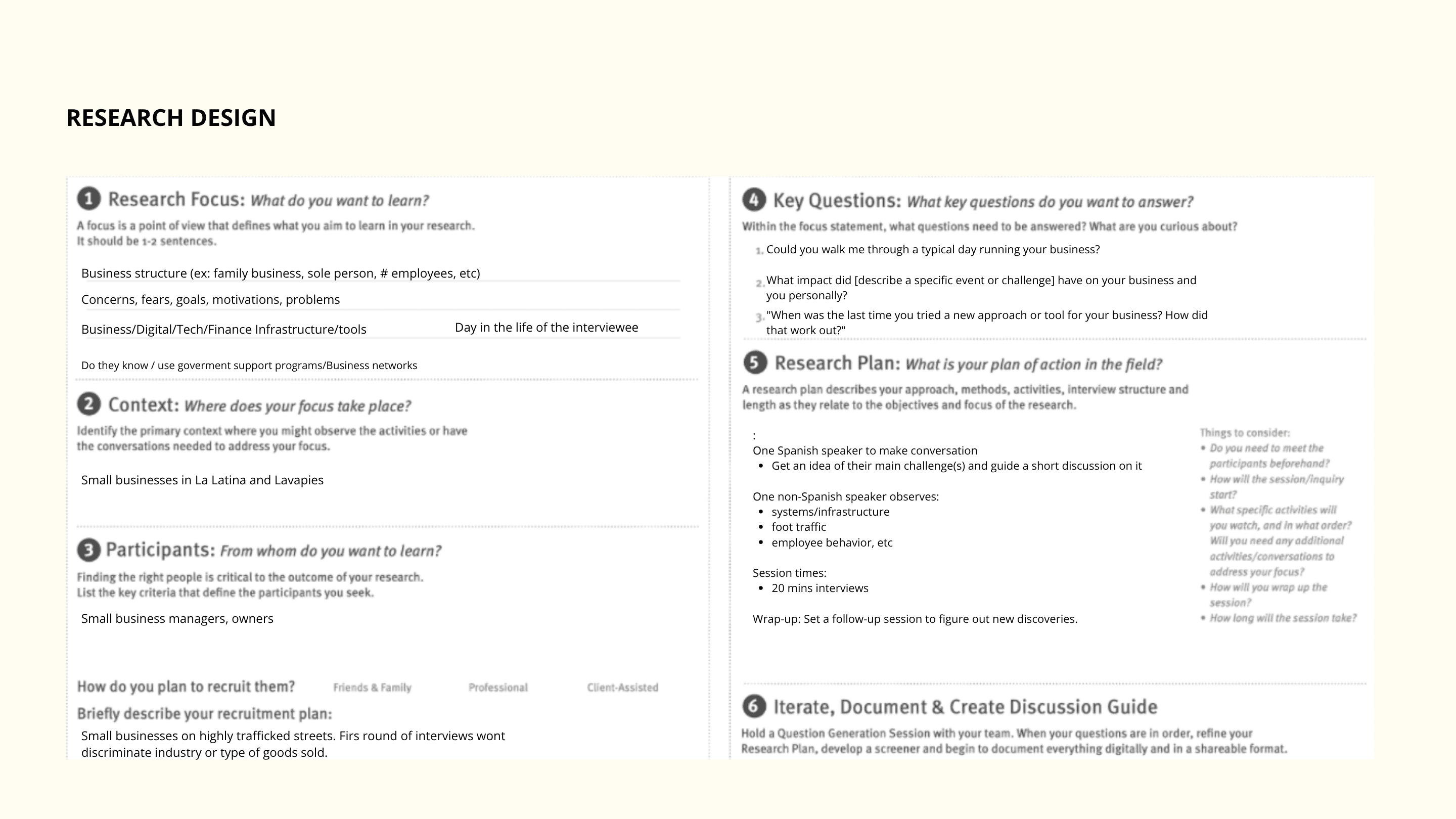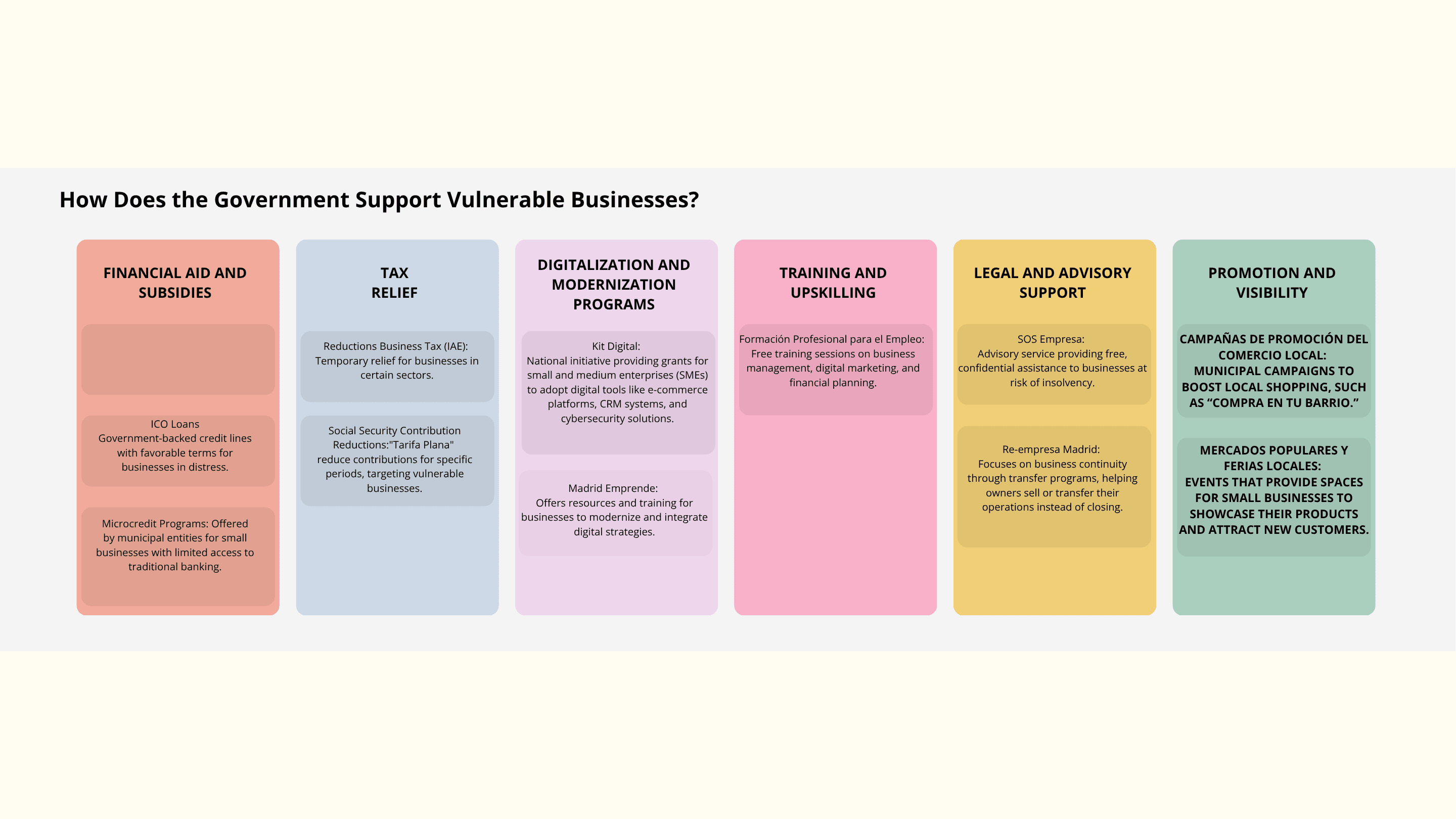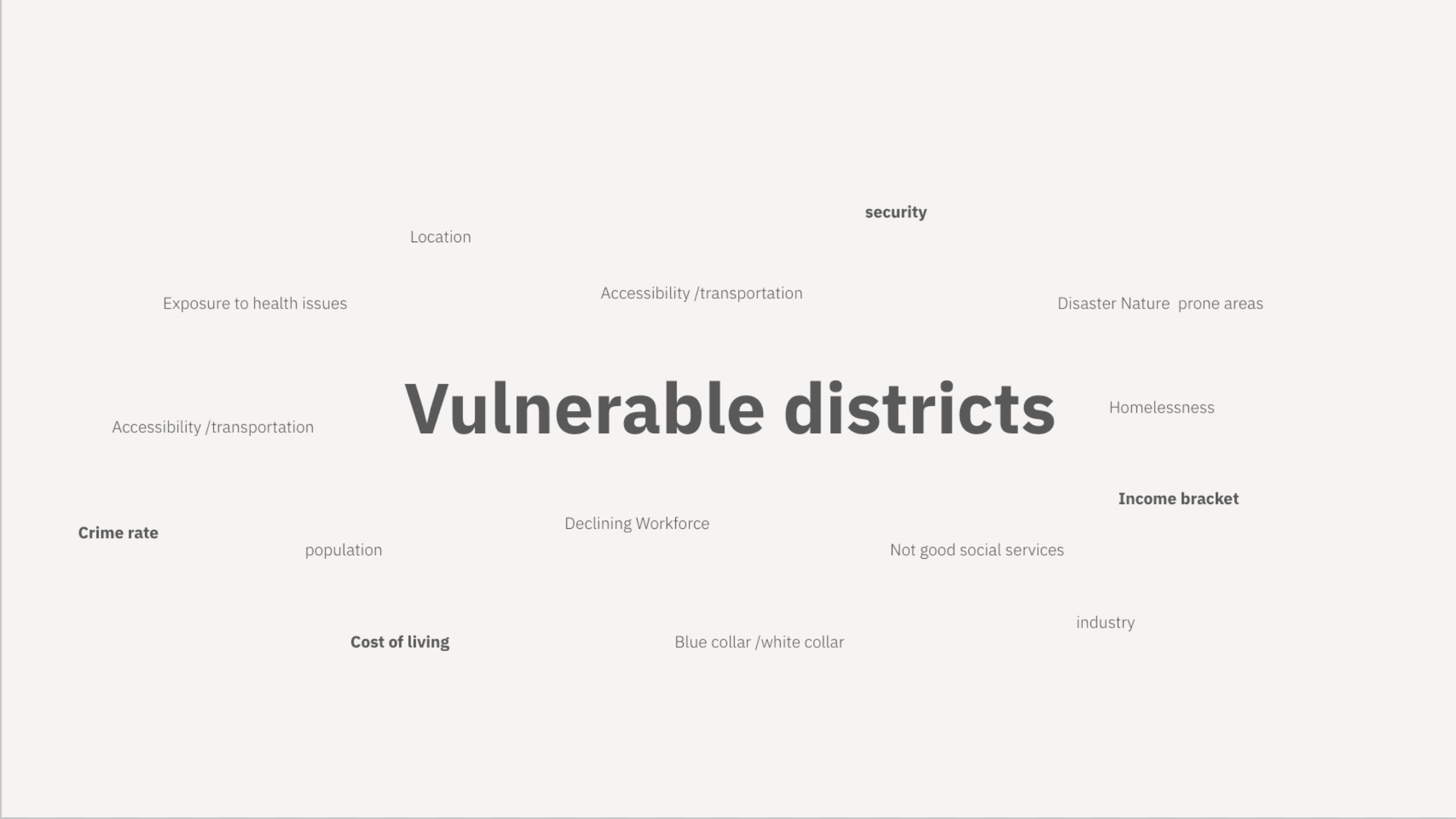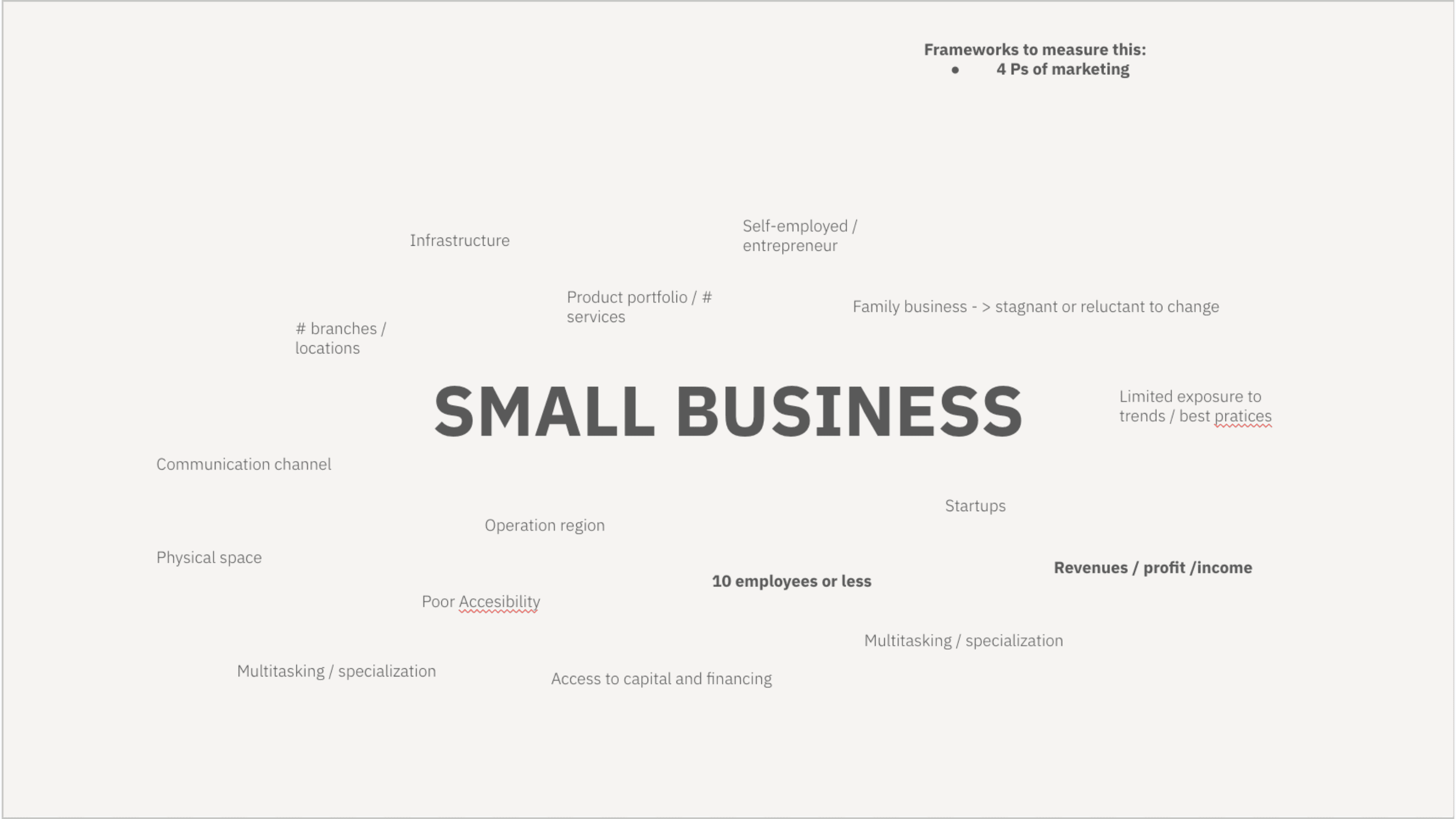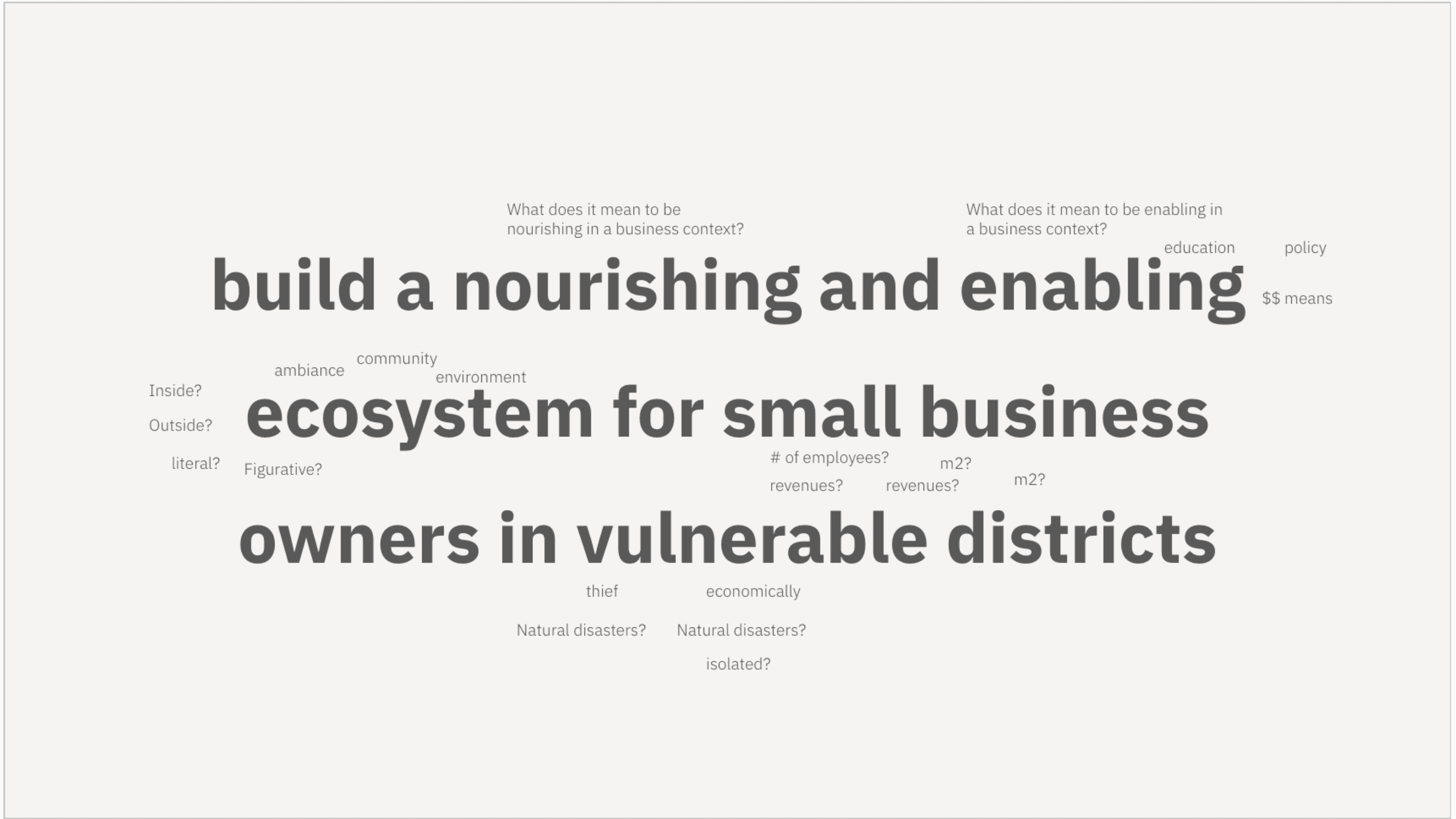Strategic Research & Ecosystem Design for Social Impact
Strategic Research and System Design for Social Impact
About the project
This project aimed to understand the realities faced by small businesses in vulnerable neighborhoods of Madrid, using Lavapiés as a case study. The goal was to map the existing ecosystem, identify key tensions, and design strategic guidelines to foster visibility, resilience, and long-term sustainability for these businesses.
Challenge
In neighborhoods like Lavapiés, small business owners face structural barriers such as institutional distrust, limited digital access, competition from large retail chains, and a disconnect between their values and existing public support. The challenge was: how might we build an enabling ecosystem rooted in their real motivations, without forcing traditional growth narratives?
Research and Insights
I led the design and execution of a qualitative research study, conducting in-person interviews with a diverse range of business owners (restaurants, craft stores, bookstores), supported by AEIOU observations and systems mapping. Key insights included:
Owners are often more driven by passion or family goals than financial growth.
Local business associations are not seen as allies by all entrepreneurs.
Long-established businesses (10+ years) are aware of digital tools but do the bare minimum to exist online.
There is a strong need for steady customer flow and niche support aligned with each business’s identity.
Solution
Based on our findings, we proposed a set of context-aware strategies:
Modular support models, with different levels of engagement based on digital maturity and ambition.
Localized recommendation systems, such as themed neighborhood maps (e.g., vegan-friendly, vintage).
Visibility initiatives beyond tourism, emphasizing cultural and ethical values.
Policy design adjustments, rethinking institutional programs to reflect the lived realities and motivations of local entrepreneurs.
Impact
The project provided a replicable framework for reimagining how policy and service design can adapt to local ecosystems using bottom-up principles. It was presented within the Master in Customer Experience & Innovation program as a case of systemic design for social impact.
Final learnings/outcome
Designing for vulnerable communities requires cultural sensitivity, deep listening, and flexibility. This project reinforced the importance of co-creating with the people inside the system not only for them.
